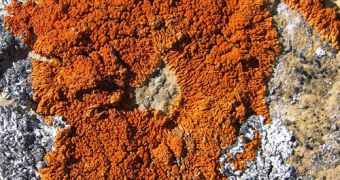Over the past 20 years, the European Space Agency (ESA) has been directly involved with supporting and promoting astrobiology studies. These are investigations into how life forms survive in the extreme environment that is the outer space. For this purpose, in 2008, the Expose-E experiment was installed on the Columbus module of the International Space Station (ISS). It featured various types of basic life, and other biological samples that were exposed to the harshness of space to various degrees, Space Fellowship reports.
Life is known to be extremely capable of enduring conditions that would seem extremely unfavorable to the average human. Bacteria and microbes inhabit the areas immediately adjacent to hydrothermal vents, which are the points in the Earth's crust where hot gas from the planet's mantle is vented out. Other species also live inside volcanoes, whereas some endure under miles of ice in Antarctica. But one type of lichens that flew on Expose-E, and returned home in September 2009, proved to be highly capable of enduring the radiation, temperature fluctuations and UV radiation of outer space.
“The purpose is to increase our knowledge on the origin, evolution and adaptations of life and also provide an experimental basis for recommendations for planetary protection,” ESA biologist Rene Demets says. The experiment itself was devised as a suitcase-sized box, which was divided into two layers of three-experiment trays. Four recesses were built into each of the trays, and further divided into smaller compartments. These were then filled with biological or biochemical samples, including Xanthoria elegans lichens, which, as it turns out, are actually proficient at living in outer space. These organisms were collected from mountains in Spain.
“These Xanthoria elegans lichens were flown on Expose-E and they are the best survivors we know. These can be found typically in the most extreme places on Earth. When they are put in an environment they don’t like, they put themselves in off-mode and wait for better conditions. Once you put them back in a suitable environment and give them some water, they just carry on living as before,” Dements adds about these lichens, which are in fact a combination of fungi and cyanobacteria, or another type of photosynthetic partner.

 14 DAY TRIAL //
14 DAY TRIAL //